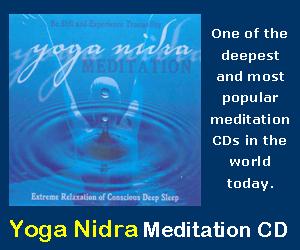|
|
Patanjali
Codifier of the Yoga Sutras
Codifying the Yoga Sutra: Patanjali codified, or compiled in a systematic way,
the art and science of Yoga in the Yoga Sutras. The Yoga Sutras succinctly outlines the art and science of Yoga for
Self-Realization. Nothing new was created with the Yoga
Sutras, but rather the ancient practices were summarized
in an extremely organized and terse way. While the Yoga Sutra itself is ancient, archaeological evidence and other
texts suggest that the methods described in the Yoga Sutras were being practiced as early as 3000 BCE. Oral
tradition states that the date may be even earlier.
Dates: Scholars estimate that Patanjali lived some time between 400 BCE and
200 AD, though they are in disagreement about these dates. While the scholars debate the actual dates of Patanjali,
oral tradition accounts for the apparent time differences by explaining that the name Patanjali is a surname, and is
the name of a lineage and school of teachers, students, and sages, rather than being only one person. However, for
convenience sake, Patanjali is spoken of as a single person, who might have been founder of the lineage. Although
Patanjali is a surname of the lineage, there have also been several individuals with the name Patanjali, which may or
may not have been related with the lineage relating to the Yoga Sutras of Patanjali.
Oral tradition: In addition, the Yoga traditions are historically oral traditions,
and some say the Yoga Sutras were not written down for at least a couple hundred years after they were systematized
by Patanjali. During that period it was the custom for the entirety of the Yoga Sutras to be memorized as a part of
the practice. This type of learning is still done today by a few teachers and students, though many of them now do
this as an intellectual study of Sanskrit, rather than as an aid to practice and direct experience.
Unbroken teaching: While the lineage of Patanjali may or may not have continued
in unbroken sequence in the visible or recorded traditions in the plains of India, the practices of the Yoga Sutras have
continuously been practiced by the sages of the
Himalayas.
The longer history: "The tradition of India's philosophical lineages is lost in
antiquity. According to one Tantric text (Shri-vidyarnava) there were seventy-one teachers from Kapila, the founder
of Sankhya [considered to be the philosophical basis of Yoga], to the greatest proponent of
Vedanta, Shankaracharya
who taught at the end of the seventh and beginning of the eighth century A.D.; and from Shankara to the present day a
lineage of up to seventy-six teachers has been enumerated. If this appears to be a long time, the reader might find
interesting the fact that in approximately 1400 B.C. the Brhadaranyaka Upanishad (VI.5.1-4) enumerated sixty-six
teachers up to that time. Patanjali in his work on grammar speaks of eighty-four thousand rshis [enlightened sages
who teach from their experience]. Within the Indian tradition it is almost impossible to assign a date to the rshis..."
(Pandit Usharbudh Arya, Yoga Sutras of Patanjali, Volume 1, 1986)
Vyasa
The ancient sage Vyasa has written a commentary on the
Yoga Sutras, which
is widely recognized as the leading expansion on the very brief sutras developed by Patanjali. Vyasa is considered to
be an enlightened sage in his own right, with his comments or explanations considered as authentic as those of Patanjali.
It is common for Yoga Sutras translations and commentaries by other people to also contain the descriptions by Vyasa.

-------
This site is devoted to
presenting the ancient Self-Realization path of
the Tradition of the Himalayan masters in simple, understandable and
beneficial ways, while not compromising quality or depth. The goal of
our sadhana or practices is the highest
Joy that comes from the Realization in direct experience of the
center of consciousness, the Self, the Atman or Purusha, which is
one and the same with the Absolute Reality.
This Self-Realization comes through Yoga meditation of the Yoga
Sutras, the contemplative insight of Advaita Vedanta, and the
intense devotion of Samaya Sri Vidya Tantra, the three of which
complement one another like fingers on a hand.
We employ the classical approaches of Raja, Jnana, Karma, and Bhakti
Yoga, as well as Hatha, Kriya, Kundalini, Laya, Mantra, Nada, Siddha,
and Tantra Yoga. Meditation, contemplation, mantra and prayer
finally converge into a unified force directed towards the final
stage, piercing the pearl of wisdom called bindu, leading to the
Absolute.
|
|